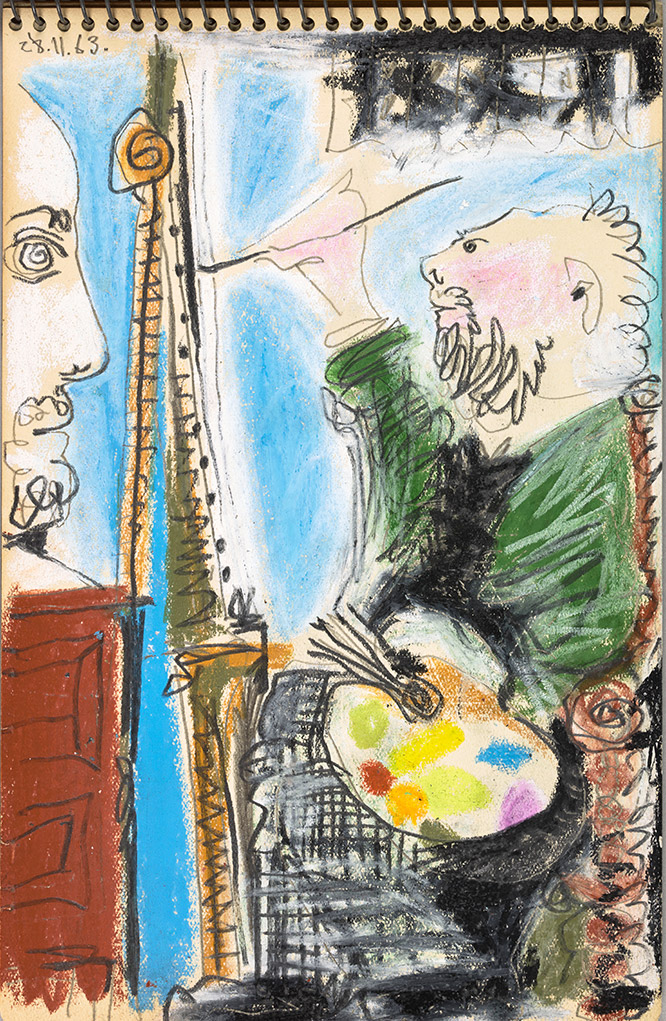Several donations for an exceptional collection
The agreement for the first Pablo Picasso dation was signed on November 13, 1979 between the French State and the artist's heirs. It included 203 paintings, 158 sculptures, 16 collages, 29 relief paintings, 88 ceramics, 3,000 drawings, and a variety of illustrated pieces, manuscripts, and other works qualified as "primitive art" at the time.
Forty years later, the Musée Picasso in Paris held an exhibition titled Picasso. Chefs-d’œuvre ! [Picasso: Masterpieces!] in which many of the pieces from the dation were compared with works from other collections. This retrospective view featured Les Femmes à leur toilette, 1937; Grande baigneuse au livre, 1937; La Chèvre, 1950; and Musicien, 1972, among others, all from the 1979 dation. The dation also included many other major works such as the Autoportrait, 1901; Deux femmes courant sur la plage, 1921; Paul en Arlequin, 1924; Le Baiser, 1925, and Grand nu au fauteuil rouge, 1929. Every generation of scholars and curators has found new areas of interest in the work.
Following Picasso's wishes, his heirs also donated his private collection to the French State. It initially spanned close to fifty pieces by old and modern masters which entered the collections in 1973.
The heiress of Jacqueline Picasso also made a dation, which was officially accepted on March 13, 1990 and comprised 47 paintings, 2 sculptures (one of which was Le Faucheur, of 1943, which had already been considered for the 1979 dation), 40 drawings, 24 sketchbooks, 19 ceramic pieces, and 245 engravings and lithographs. This new contribution was featured at an exhibition at the Grand Palais in 1990. Another 11 works were delivered as a dation by the heirs of Dora Maar in 1998, including the 1915 portrait of Max Jacob in pencil and the gouache Dora et le Minotaure, of 1936. Maya Picasso's children made yet another dation in 2021 (six paintings, two sculptures, and a sketchbook) which was shown at the Musée Picasso in 2022.
Picasso's personal archives, including 200,000 items, were handed over by his heirs in 1978 for a preliminary classification before being donated to the national collections in 1992. This gigantic ensemble, bearing witness to the artist's penchant for record-keeping ("Why should I throw out what was kind enough to come my way?" he said) was inventoried and featured in a number of exhibitions, starting with Les Archives de Picasso : « on est ce que l’on garde ! »" (The Picasso archives: "You are what you keep").[1]
With a view to creating the Musée Picasso, the artist's friends and relations made noteworthy additional bequests, dations, and donations from 1980 onwards.
[1] Réunion des Musées Nationaux, 2003.





 Summary
Summary